
Lorraine Janzen Kooistra, “The Moxon Tennyson as Textual Event: 1857, Wood Engraving, and Visual Culture”
By convention the launch of the so-called “golden age” of wood-engraved illustration in Britain, also known as “the sixties,” is Edward Moxon’s publication, in May 1857, of Alfred Tennyson’s Poems, with 54 wood-engraved illustrations designed by 8 artists, including the Pre-Raphaelites John Everett Millais, William Holman Hunt, and Dante Gabriel Rossetti. Although the Moxon Tennyson was neither a commercial nor critical success on first publication, before the decade was out its Pre-Raphaelite designs were considered a touchstone for artistic illustration, a reputation that continues today. Without disputing the significance of this aesthetic achievement, I want to shift critical focus to the Moxon Tennyson’s status as mass-produced work of art in the age of mechanical reproduction. My interest here is in how its visual communication was expressed through its reproductive technology at the historical moment of its production and reception. This essay re-positions the Moxon Tennyson as a textual event by reading it in the context of documentary, satiric, and artistic wood-engraved images selected from the crucial six-month period after its publication. By situating the Pre-Raphaelite illustrations for Tennyson’s Poems in relation to representations in the public press of such disparate events as the Art Treasures of the United Kingdom Exhibition in Manchester, the reportage on Indian uprisings at Meerut and Cawnpore, the Matrimonial Causes Act, and the Christy Minstrels show in London, I aim to show the complex ways in which the Moxon Tennyson was a worldly event, caught up in, and contributing to, ways of seeing and knowing in 1857.

Dennis Denisoff, “The Hermetic Order of the Golden Dawn, 1888-1901”
This article presents the history of the Hermetic Order of the Golden Dawn (1888-1901), the most influential hermetic society of the nineteenth century. Its members practiced and trained initiates in using natural magic to enrich one’s connection with a spiritual realm of being. Although secretive, the Golden Dawn was, nevertheless, both the product of, and an influential contributor to, a broader social investment in the occult. In addition to offering a brief history of the Order and a synopsis of its structure, this article situates the Order among other related associations of the period, as well as within a literary and dramatic community, considering its writings and ritual practices as creative products. This article encourages a view of the Order not as isolated and inward-looking, but as engaged in a lively exploration of contemporary interests and values, and as making an original contribution to the literature of the late-Victorian period in the process.
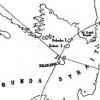
Monique R. Morgan, “The Eruption of Krakatoa (also known as Krakatau) in 1883”
This essay gives a brief overview of the events of 26-27 August 1883, when the volcanic island of Krakatoa in Indonesia exploded; it generated tsunamis which killed over 36,000 people, was heard 3,000 miles away, and produced measurable changes in sea level and air pressure across the world. The essay then discusses the findings of the Royal Society’s Report on Krakatoa, and the reports in the periodical press of lurid sunsets resulting from Krakatoa’s dust moving through the atmosphere. It closes by examining literature inspired by Krakatoa, including a letter by Gerard Manley Hopkins, a poem by Alfred Tennyson, and novels by R. M. Ballantyne and M. P. Shiel.
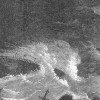
Krista Lysack, “The Royal Charter Storm, 25-26 October 1859”
This essay considers the Royal Charter Storm, perhaps the most devastating weather event to occur in Britain in the nineteenth century, a gale that is named for the wreck of the Royal Charter steamship off the coast of North Wales and the subsequent drowning of most of its passengers and crew. Although this tragedy resulted in improvements in weather warning systems that contributed to the rise of modern forecasting, that is not the storm’s only legacy. In the aftermath of a parallel media storm, a host of reports ran in newspapers across the country in the days, weeks, and even months that followed, together producing a sense of this wide-ranging storm as a shared, national event. Among these reports was Charles Dickens’s account in All the Year Round, a striking portrayal of the losses associated with the wreck and an effort to ameliorate the suffering it had caused. Rather than predicting the weather, reports of the storm in the popular press turned to another kind of weather model of sorts, the retrospective work of memorializing and sympathy.
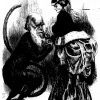
Jonathan Smith, “The Huxley-Wilberforce ‘Debate’ on Evolution, 30 June 1860”
The “debate” over evolution between T. H. Huxley and Bishop Samuel Wilberforce at the 1860 meeting of the British Association for the Advancement of Science in Oxford is an iconic story in the history of evolution and, indeed, in the history of the conflict between science and religion, second only to Galileo’s troubles with the Vatican. Huxley, the traditional account has it, vanquished Wilberforce by responding to an insulting question about his own ancestry with a masterful rejoinder that exposed the Bishop’s ignorance of science and ungentlemanly behavior. Historians have shown that this traditional account is biased and distorted, a construction many years after the fact by the Darwinians and their allies, yet it continues to live on, even in literary studies. Reconstructing the Huxley-Wilberforce encounter, the contexts in which it took place and what is and is not known about it, yields an understanding of the relationship between religion and science in the Victorian period that is fuller and more complex than the traditional “conflict” model.
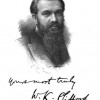
Daniel Bivona, “On W. K. Clifford and ‘The Ethics of Belief,’ 11 April 1876”
The mathematician W. K. Clifford was the youngest and possibly most controversial member of the Metaphysical Society, a group originally formed by Alfred Lord Tennyson and some close friends. Lasting from 1869 to 1880, the Society ultimately brought together a great variety of intellectuals, writers, philosophers, scientists, poets, journal editors, politicians, and Church figures of the era for vigorous debates on metaphysical topics. A pioneering promoter and translator of the non-Euclidian geometer Riemann, Clifford anticipated Einstein’s discovery that gravity was not a mysterious force of bodies but an effect of curved space, but it was his withering criticism of metaphysical claims before the Metaphysical Society – in particular, his attack on the morality of believing on insufficient evidence, an argument which was delivered two years after he first joined the group and later published as the essay “The Ethics of Belief” – that marked him as the most controversial proponent of the agnostic position in the late Victorian period. When he died at the young age of 33 in 1879, Clifford left a legacy of important unpublished scientific work and a number of impressive published essays in which he offered both a very compelling critique of the ethics of metaphysical commitments and a powerful argument, inspired by Darwin’s Descent of Man, in favor of the claim that ethics derive from evolutionary history rather than descending from an immaterial God.
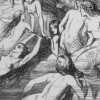
John M. Picker, “Threads across the Ocean: The Transatlantic Telegraph Cable, July 1858, August 1866”
This essay considers the significance of one of the signal technological developments of the nineteenth century—an event so signal that it happened twice. The transatlantic telegraph cable linking the Old World with the New was first successfully completed in August 1858, only to cease functioning within a month, and was permanently re-established in July, 1866, this time accompanied by the reappearance, with slight variations, of much of the verse and prose written to commemorate the original success, in what might be considered a case of canny cultural recycling. While the cable ultimately connected England and the United States, it only did so by way of Ireland and Canada, which is to say that this was very much an imperial project, one celebrated as reinforcing transatlantic ethnic and linguistic superiority in a mythology of Anglo-Saxonism that Victorians largely constructed and widely endorsed. As a way to approach this convergence of ideologies of progress, empire, language, and race, the essay focuses on what arguably was the critical aspect of the cable’s material composition, and considers, in general terms and in the specific literary case of Henry James, how the concept of insulation can help us to interpret representations of the cable and the transatlantic ties it extended.
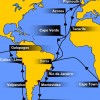
Ian Duncan, “On Charles Darwin and the Voyage of the Beagle”
The event now known as “the voyage of the Beagle” comprises Charles Darwin’s circumnavigation as ship’s naturalist on the second of three surveying voyages by H.M.S. Beagle; the writings published as his first book, the Journal of Researches; and the genesis of his theory of evolution by natural selection. Writing between regimes of world-knowledge, Darwin mediates scientific observation through the language of aesthetics, and seeks to understand the convergence of disparate scales of geological and human history.
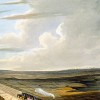
Paul Fyfe, “On the Opening of the Liverpool and Manchester Railway, 1830”
Opened to the public in 1830, the Liverpool and Manchester Railway effectively inaugurates the modern railway era. This essay sketches the construction of the L&M, the memorable events of its opening day, and its impact upon representations of the railway and its risks. The opening of the L&M reveals the tumultuous political dynamics of pre-Reform Bill Britain as well as deep uncertainties about industrial modernity, encapsulated by a fatal accident to MP William Huskisson.

Anne Stiles, “The Rest Cure, 1873-1925”
This essay discusses the rest cure, a popular treatment for nervous illness pioneered by Philadelphia neurologist Silas Weir Mitchell in the 1860s and ‘70s. Emphasis will be placed on the spread of the cure to Britain and the role of the rest cure in literature.
